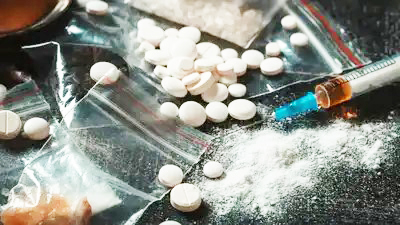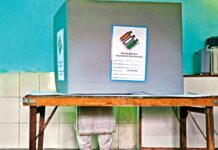Haryana’s anti-drug campaign shows strong rural success but faces persistent challenges in urban drug control
CHANDIGARH: The campaign against drugs in Haryana has so far yielded a positive response, with over 4,000 villages in the state declared drugfree. However, making some urban pockets free from drugs still remains a challenge for the authorities.
Within the first four months of 2025, the Haryana police reported 143 major drug cases, followed by the arrest of 332 people, including 145 smugglers from other states. The police seized large quantities of drugs, including 1.5 kg of heroin, 904 kg of ganja, 50 kg of opium, 40 kg of charas, over 5,800 kg of poppy husk, and more than 1.4 lakh banned tablets, capsules, and bottles.
Last year, the state police arrested 4,652 people under drug laws for their involvement in the drug trade. The police also seized illegal assets worth Rs 52 crore and demolished 111 buildings linked to drug traffickers, while 65 repeat offenders were arrested under strict laws. To speed up justice, the government started eight special NDPS fast-track courts in places like Ambala, Hisar, and Sirsa.
The figures revealed that the conviction rate improved from 48% in 2023 to 54% in 2024. Officials associated with the anti-drug campaign of the Haryana State Narcotics Control Bureau (HSNCB) revealed that rural areas, especially districts along the Punjab and Rajasthan borders such as Sirsa, Fatehabad, Kaithal, Hisar, and Gurugram, struggle with the supply of opium and poppy husk— often smuggled from Rajasthan and Madhya Pradesh.
Even urban centres like Gurugram are seeing a rise in synthetic party drugs such as MDMA, LSD, cocaine, and meth. These drugs are mostly used by urban youth and in high-end clubs. Internal reports suggest that international gangs are now targeting Gurugram’s party scene with drugs like cocaine and ganja, and the spectre of drug addiction and trafficking looms large, fuelled by a potent mix of unemployment, easy access to narcotics, and evolving smuggling networks.
Under this special campaign, the government claims to have achieved significant results. Under the Nasha Mukt Bharat Abhiyaan and Haryana Uday campaign, the government has certified 4,054 panchayats (55.32% of total panchayats) and 859 urban wards (42.31% of total urban areas) as drug-free, claiming that no drug peddlers are active in these areas and known addicts are under treatment. The state government recently launched the ‘Drug-Free Haryana Cyclothon 2.0,’ a flagship anti-drug campaign. Flagged off by Chief Minister Nayab Singh Saini in Sirsa, the Cyclothon spanned all Assembly constituencies between April 5 and April 27—covering over 2,010 kilometres across districts.
The event became a powerful symbol of collective resolve, with participation from government officials, local leaders, women, youth, and village communities. Officials claimed the campaign saw overwhelming public engagement, with 7,23,568 people attending various events and 4,56,004 cyclists actively joining the movement. According to a senior official from the Chief Minister’s Office, the government is not only focusing on arrests but also on rehabilitation.
There are 161 de-addiction centres, with 17 new ones in the pipeline. In the financial year 2024–25, over 36,500 people with minor addiction issues were treated in OPDs, while 2,651 severe cases were hospitalised. The official stated that special campaigns like the “Namak Lota Abhiyaan” (Pledge Against Drugs) encourage addicts and small peddlers to give up drugs in front of village elders.
The state has also activated the MANAS helpline 1933 and is using digital platforms like NCORD and NIDAAN to monitor drug peddlers and coordinate with national agencies.
Haryana’s Additional Chief Secretary (Home), Sumita Misra, during the Apex Committee Meeting of the National Narcotics Coordination Portal (NCORD), underscored the extensive illicit drug trade in the state. She said that in 2024 alone, the Haryana HSNCB and district police registered 3,051 NDPS cases, with significant seizures in districts like Sirsa, Ambala, Kurukshetra, Gurugram, and Faridabad. Senior officers believe that the Haryana government’s aggressive multi-pronged campaign against narcotics—from arrests and asset seizures to community outreach and de-addiction drives—has yielded good results.
However, the state continues to face a daunting challenge in curbing drug abuse, especially in its urban pockets. Experts associated with the HSNCB indicate that the deep entrenchment of drug syndicates, coupled with factors like unemployment and the glamourisation of narcotics among youth, complicates enforcement efforts.








